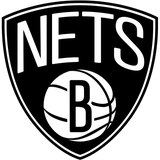
Which Five-Man Unit Is The Brooklyn Nets' Best?
Nov 29, 2016; Brooklyn, NY, USA; Brooklyn Nets center Brook Lopez (11) reacts with teammates during the fourth quarter against the Los Angeles Clippers at Barclays Center. Mandatory Credit: Brad Penner-USA TODAY Sports
A good part about having a team that’s not contending for anything is that the coach can play around with various lineups. This is exactly what Kenny Atkinson is doing with the Brooklyn Nets.
The Brooklyn Nets aren’t a team that’s incredibly top-heavy regarding talent. Brook Lopez and Jeremy Lin are clearly the best two players on the team, but the guys below them aren’t too far below on the skill tree.
Want your voice heard? Join the Nothin' But Nets team!
Since Lin’s hamstring injury, Kenny Atkinson’s deployed many lineups, but most of them haven’t worked out well. The issue surrounding each lineup is the same: defense. No matter who gets thrown out there, they struggle. It’s how the Nets are. On offense is where the separation occurs, and some units struggle to manufacture points.
The lineup that’s constructed below will be the most versatile one because the Nets just can’t compete if they throw out a strictly offensive or strictly defensive unit.
Nov 23, 2016; Brooklyn, NY, USA; Brooklyn Nets point guard Isaiah Whitehead (15) talks to point guard Jeremy Lin (7) during the first quarter against the Boston Celtics at Barclays Center. Mandatory Credit: Brad Penner-USA TODAY Sports
Isaiah Whitehead (or Jeremy Lin when he’s healthy)
This is an easy choice, but the caveat is in the headline. Lin doesn’t have a timetable to return, so Isaiah Whitehead is the next choice to get a majority of minutes at the point. He’s started the last five games, and the point guard jumble is over. Whitehead has looked much more confident and comfortable since being thrown out with starters, and his numbers back it up.
When Whitehead starts, he’s not a focal point of the offense. Brook Lopez, Sean Kilpatrick, and Bojan Bogdanovic are all ahead of him when looking for shots, and it alleviates the pressure to create regularly. The offense flows more, and Whitehead averages 7.1 points and four assists while having a plus/minus of +2.6.
As a reserve, the numbers are as follows: 3.7 points, 2.0 assists, and -4.7.
Although these five guys aren’t a “starting lineup” per say, it’s constructed by incorporating the Nets’ best weapons.
Once Lin comes back, he’ll replace Whitehead at the point guard spot, but both are very similar in how they play. They’re big, aggressive guards who put pressure on the defense when they attack.
Since Whitehead isn’t perimeter-oriented, Lin’s return won’t bamboozle the offense because it won’t change. It’ll make it better, obviously, because Lin is a more polished ball layer and defenses fear him more than Whitehead.
Between Lin and Whitehead on the defensive end, there’s a significant gap in ability that stems from tenure. Since Lin has more time in the league, he understands more. Both fare fine based on physical tools, but the understanding of the X’s-and-O’s are what set the two apart.
An unclear judgment of the scheme leads to lapses, and lapses result in easy buckets.
Nov 23, 2016; Brooklyn, NY, USA; Brooklyn Nets shooting guard Sean Kilpatrick (6) reacts during the fourth quarter against the Boston Celtics at Barclays Center. Mandatory Credit: Brad Penner-USA TODAY Sports
Sean Kilpatrick
Not much to justify here.
Sean Kilpatrick is a fan favorite, and someone who has gotten tasked with a lot since injuries have hit the roster. Offensively, he can do it all, but he’s not as efficient as he can be. At a tick over 42 percent, there’s a 3.5 percent dip in shooting from last year, but Kilpatrick has supplemented that with enhanced passing ability.
For a hot minute, Kilpatrick was Kenny Atkinson’s floor general. The move got made out of pure necessity, and it became evident that Kilpatrick struggles when directing a large portion of the offense. In this lineup, he’d be the secondary ball handler with a much less strain; just another guy who can collapse the defense and kick to the open man.
More from Nothin' But Nets
All of Kilpatrick’s troubles stem from his decision-making ability, and he’s committed 45 turnovers to 43 assists through the first 17 games of the year. Poor reads and bad passes can be attributed to a lack of understanding of the NBA, and it’s fine, for now.
This season is the first real NBA action that Kilpatrick is experiencing.
Despite spending 23 games with Brooklyn last year, it’s an entirely different system this year. The way Atkinson wants the ball to be moved is vastly different from whatever travesty offense got implicated last season.
Furthermore, he’s improving on defense. He’s far from being lockdown on the perimeter, but he’s capable of staying with most guards in the league. The Nets will take capable with how bad their defense has been.
Nov 15, 2016; Los Angeles, CA, USA; Brooklyn Nets guard Bojan Bogdanovic (44) dunks the ball as Los Angeles Lakers players watch Julius Randle (30) and Nick Young (0) and Brandon Ingram (14) react during a NBA basketball game at Staples Center. The Lakers defeated the Nets 125-118. Mandatory Credit: Kirby Lee-USA TODAY Sports
Bojan Bogdanovic
Even if Rondae Hollis-Jefferson were healthy, I’d still go with Bogdanovic. RHJ looks horrible offensively this year, and he’s also had a defensive dropoff. Down the line, since the NBA is a marathon and not a sprint, Hollis-Jefferson could beat out Bogie, but not at the time of this writing.
The offense doesn’t come to a halt when Bogdanovic is out there, and he’s someone who can work off the ball to get open looks. Hollis-Jefferson can’t do that, and the Nets would be playing five-on-four offensively. Shockingly, the disparity in defense isn’t as bad as you’d think, but it would still take the offspring of Kawhi Leonard and Hassan Whiteside to fix the Nets’ problems.
Here are a few on/off court numbers courtesy of NBA.com:
Since both guys aren’t stellar defenders this year, Brooklyn would be better off taking the guy who’s much more refined offensively.
Bojan is the perfect complement to Lin because he can lurk in the corner — or on the wing — for open shots once Lin gets into the paint. Bogdanovic is not shooting well this year from three-point land (32.5 percent), but he’s someone who can get hot, and he can also put the ball on the floor and get into the lane if the defender closes out too hard on him.
Nov 15, 2016; Los Angeles, CA, USA; Los Angeles Lakers forward Julius Randle (30) is defended by Brooklyn Nets forward Trevor Booker (35) during a NBA basketball game at Staples Center. Mandatory Credit: Kirby Lee-USA TODAY Sports
Trevor Booker
Every Nets lineup needs Mr. Brooklyn Grit himself. Booker is the team’s best defender, hands down, and also crashes the boards better than anyone else. He also has a surprisingly effective offensive game.
Booker’s strength and athleticism allow him to match up with almost any power forward in the league despite giving up height in most cases. He also brings the energy, and his unrelenting competitiveness on defense rubs off on the other guys on the court.
Everyone around the team knows Booker’s impact on defense is what gets him a big part of the rotation, but he can be the Nets’ third or fourth ball handler if need be.
Unfortunately, it’s unlikely to see him bring up the ball and initiate the offense like LeBron James, but he’s able to grab a rebound, push the break, and create something.
He can play from the perimeter too, although it’s not ideal. Being around the three-point line, where he shoots 26 percent, pulls him away from the glass, thus taking away his chances of hauling in an offensive rebound or getting a tip-in. Realistically, the only time Booker should be out that far is if he’s setting a screen, something else that he’s superb at.
With a sturdy, 228-pound frame, there aren’t many guards who can wiggle around Booker when he sets a pick, and he’s someone that needs to be accounted for when rolling to the basket.
Nov 8, 2016; Brooklyn, NY, USA; Brooklyn Nets center Brook Lopez (11) reacts after scoring against the Minnesota Timberwolves during the second quarter at Barclays Center. Mandatory Credit: Brad Penner-USA TODAY Sports
Brook Lopez
This new-and-improved Brook Lopez has turned into one of the best three-point shooting centers in the league and has added a brand new dynamic to the Nets’ offense. He’s made 32 threes to start the year, and Lopez has buried them at a 37.6 percent clip.
He has a reduced role in terms of how many minutes he’s playing, but Atkinson still sees him as the number one option. Per 36 minutes, Lopez is averaging 26.3 points a night, which is a career-high.
Because of his consistency from downtown, Lopez’s low-post game has gotten better, and he’s now able to take opposing bigs off the dribble from the three-point line. It’s incredibly awkward to watch, but it’s effective. A lot of centers aren’t used to having to guard seven-footers out on the three-point line, and it’s not something they can bypass.
When bigs switch out onto guards, it’s different. The team can adjust their pick coverage and elect not to switch.
Defensively, Lopez is sufficient. He’s still a decent rim protector, but Brooklyn’s guards have a hard time containing their opponents off the dribble. A lot of times, the rotations aren’t quick enough. When Lopez is in position, however, he makes guards think twice about their attempt.
He’s also still a load to battle in the low post, and not many guys in the league can push around the 7-foot, 275-pound franchise cornerstone.
This article originally appeared on



